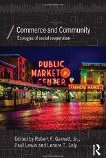Nourishing America
In a recently popular documentary, Rosie, a 5th-grader from a small town in Colorado, describes how she often goes to bed with an empty pit in her stomach. Sometimes the hunger is so bad that she can’t concentrate in school. Her mother works at a diner, making sometimes as little as $120 every two weeks. They survive, partly on the generosity of their church and a local food bank. Still, it’s tight.
The documentary—A Place at the Table—brings to the fore the issue of hunger in America. According to the USDA, 47 million Americans are recipients of the Supplemental Nutrition Assistance Program (SNAP), or food stamps. The USDA classifies these folks as “food insecure.” Translated: 47 million Americans don’t necessarily know where their next meal is coming from.[1] The film’s solution to this problem? The American people should petition Congress to allocate more taxpayer dollars toward improving the school lunch program.
In 1969, almost 3 million Americans qualified to receive SNAP benefits, costing the US government around $250 million. In 2012, the government spent nearly $80 billion to feed 47 million. But despite all this spending, we find that Americans are perhaps poorer, fatter, and sicker than ever.
The reality is that the issue of food is multi-faceted and highly complex, and extends beyond the issue of hunger into issues of health and human flourishing. If we really want to find a way to make sure everyone in America is well-fed—sustainably and nourishingly fed—we have to look at the issue from all angles.




